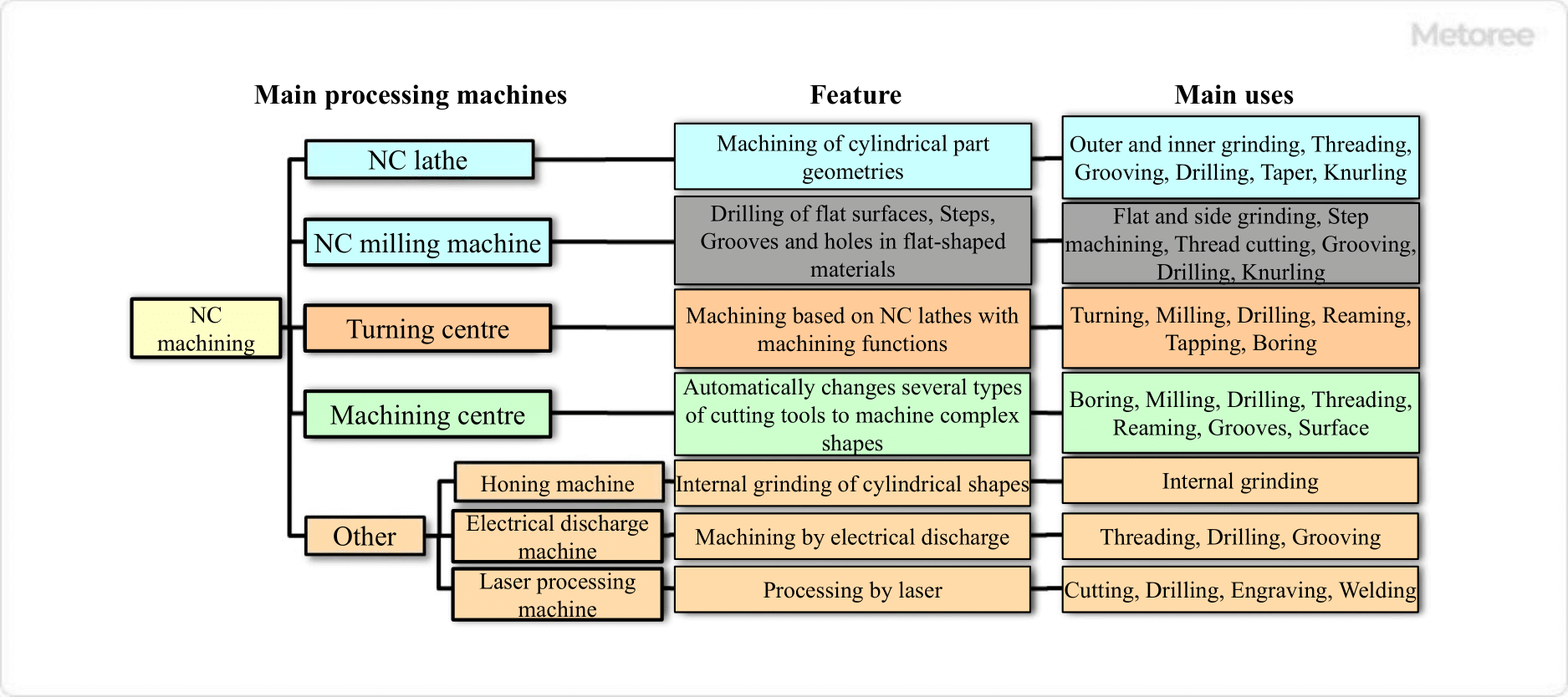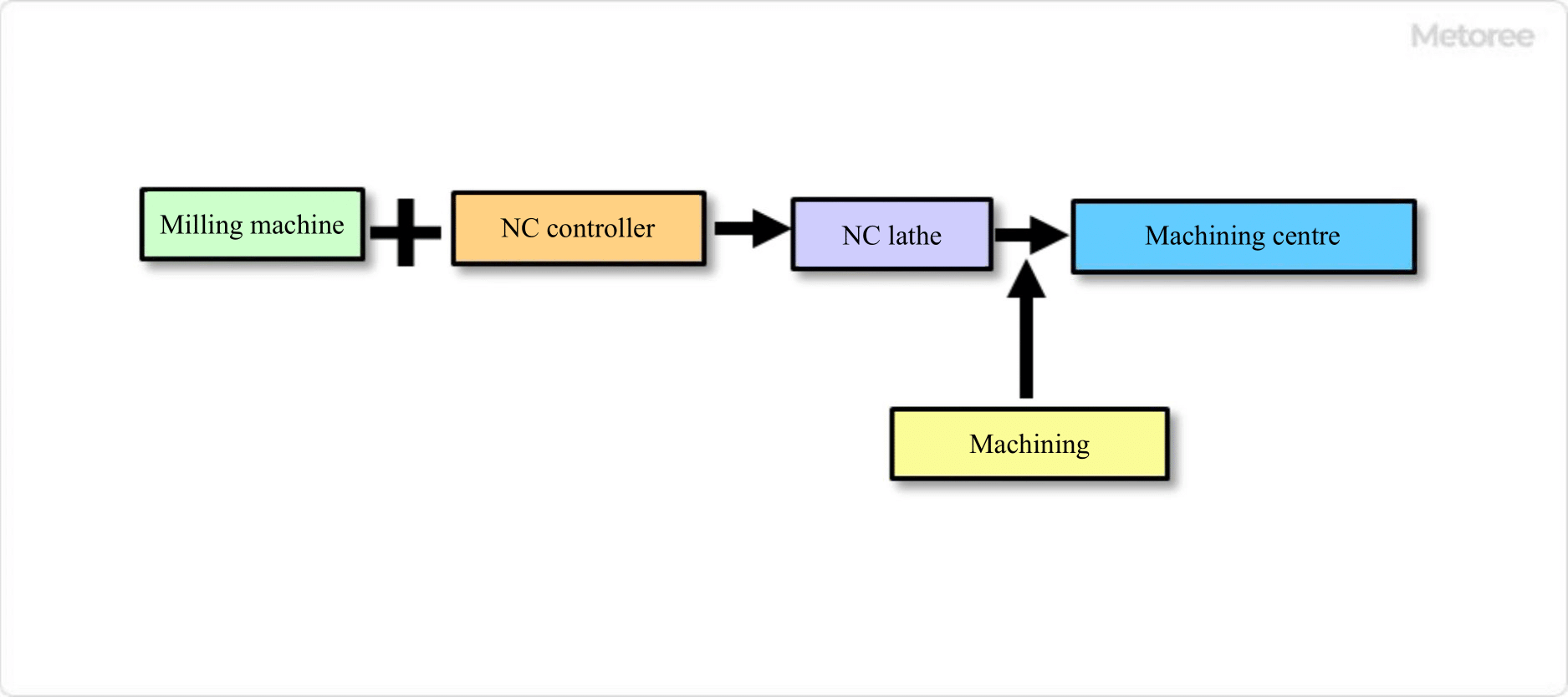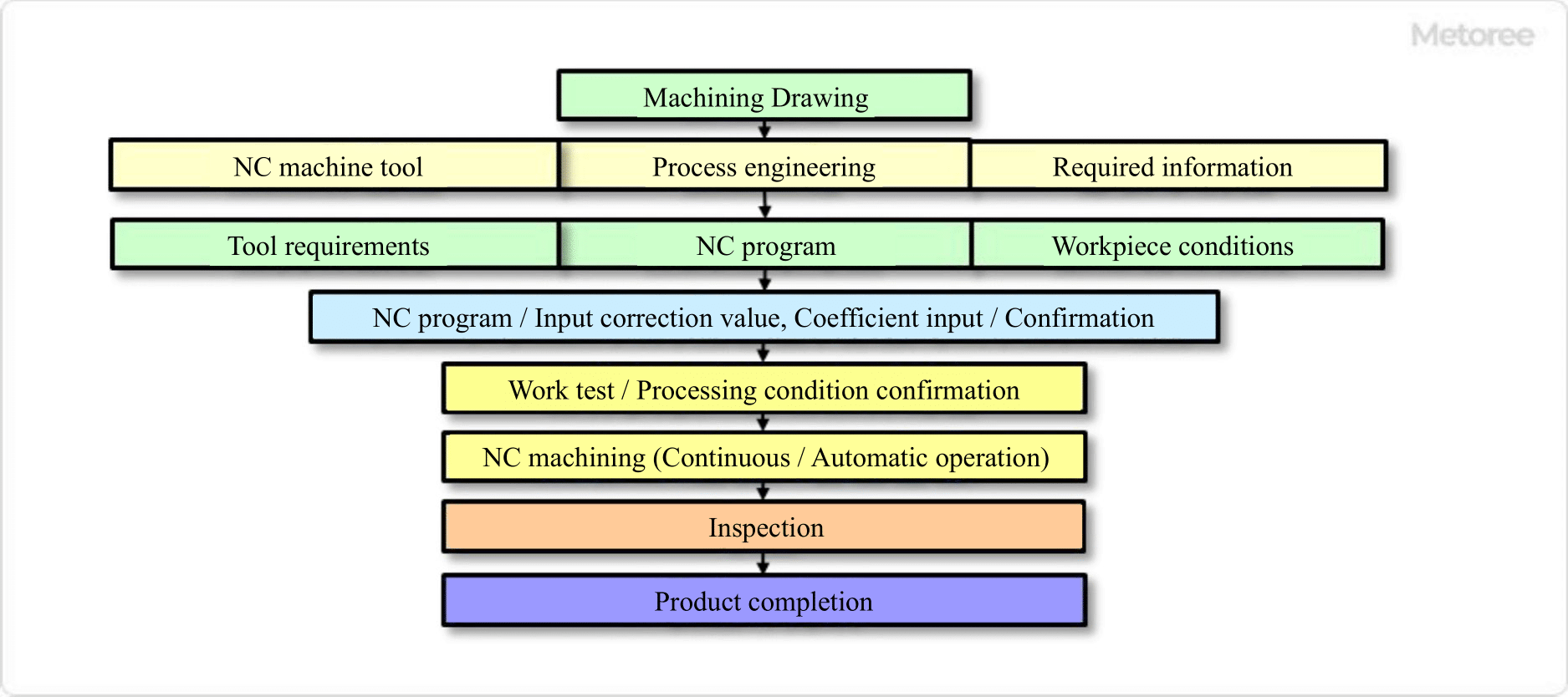What Is Punching?
Punching is a process in which a workpiece (workpiece) is held in place and a rotary tool such as a drill is used to drill a cylindrical hole in the workpiece.
In general, punching includes not only simple drilling but also “reaming” to finish the inside of the hole and “tapping” to thread the inside of the hole.
Uses of Punching
Punching is performed using a variety of drills on workpieces such as wood, steel, aluminum, and steel plates. It is important to select the appropriate drill and cutting method for the material and plate thickness to be processed.
1. Basic Punching
Punching of a workpiece is performed using a variety of drills. Work that penetrates to the outside of the workpiece is “through hole” drilling. Drilling that stops halfway through is called “stop drilling.”
2. Boring
This is a method of adding a wider hole of about 1 mm in depth to the drilled screw hole to hide the screw head and ensure tightening of the screw. In this case, a tool such as an “end mill” is used for machining threaded holes made by forging or casting.
3. Reaming
This is a machining method to finish the inside of a hole drilled with a drill smoothly and precisely. A bar-shaped tool called a “reamer” is used here to improve surface roughness and roundness by contacting the inside of the drilled hole. The “cutting edge” of the “reamer” is continuously rubbed against the workpiece to enable high-precision machining.
4. Tap Processing
This is a method of making a screw in a hole drilled using a drill. A spiral thread tool called a “tap” is inserted into the hole while rotating to create threads.
Principle of Punching
Punching consists of drilling a hole in a fixed material with a tool such as a drill or reamer. The drilling process involves drilling a hole by rotating the blade and cutting away the part of the workpiece that is in contact with the workpiece.
Since chips are produced in principle, the drill has a lead section to discharge chips, a shank section to attach to a holder, and a twist drill section to drill a hole.
Types of Punching
There are five main types of punching: shallow punching, deep punching, solid drilling, trepanning, and counterboring.
1. Shallow Punching
Shallow drilling is a drilling method for holes that are less than three times as long as the drill diameter. This process is often used in wood processing.
2. Deep Punching
This is a drilling method that exceeds 10 times the length of the drill diameter. Punching should be performed under close observation as there is a risk of breaking the drill during the process.
3. Solid Drilling
Punching of a solid (raw) workpiece.
4. Trepanning Process
This is a method of drilling around the hole, leaving a cylindrical core in the center of the hole. This method is used to penetrate a workpiece in order to leave a core in the hole.
5. Counterboring
This is a machining method to enlarge a hole that has already been machined. The finished surface inside the drilled hole is machined with even higher precision.
Other Information on Punching
Machines Used in Punching
There are five main types of machines used in punching: drilling machines, lathes, milling machines, machining centers, and turning centers.
1. Drilling Machine
Drilling machine is a typical machine for punching. NC drilling machines equipped with NC devices can be controlled by NC programs (NC machining).
2. Lathe
Punching can be done by attaching a drill or boring to a lathe. Some lathes are equipped with NC devices.
3. Milling Machine
Punching can be performed by attaching a drill to a milling machine and rotating the drill.
4. Machining center
Machining centers are NC machine tools that perform a wide variety of machining operations without replacing the workpiece. Punching can be performed on a workpiece by attaching a milling machine or a drill. Normally, 3-axis machining centers are used, but 5-axis machining centers, which add two axes (rotation and tilt axes), can perform three-dimensional machining and complex machining.
5. Turning Center
A turning center is a machine with more functions than an NC lathe, equipped with a rotary tool and ATC (automatic tool changer), etc. Punching can be performed on a workpiece by attaching a drill or a milling machine.




